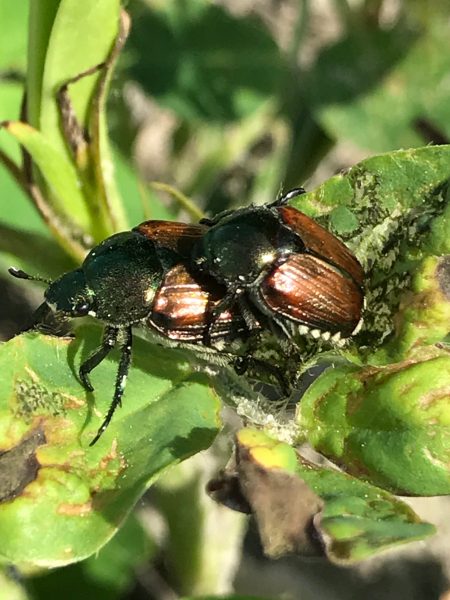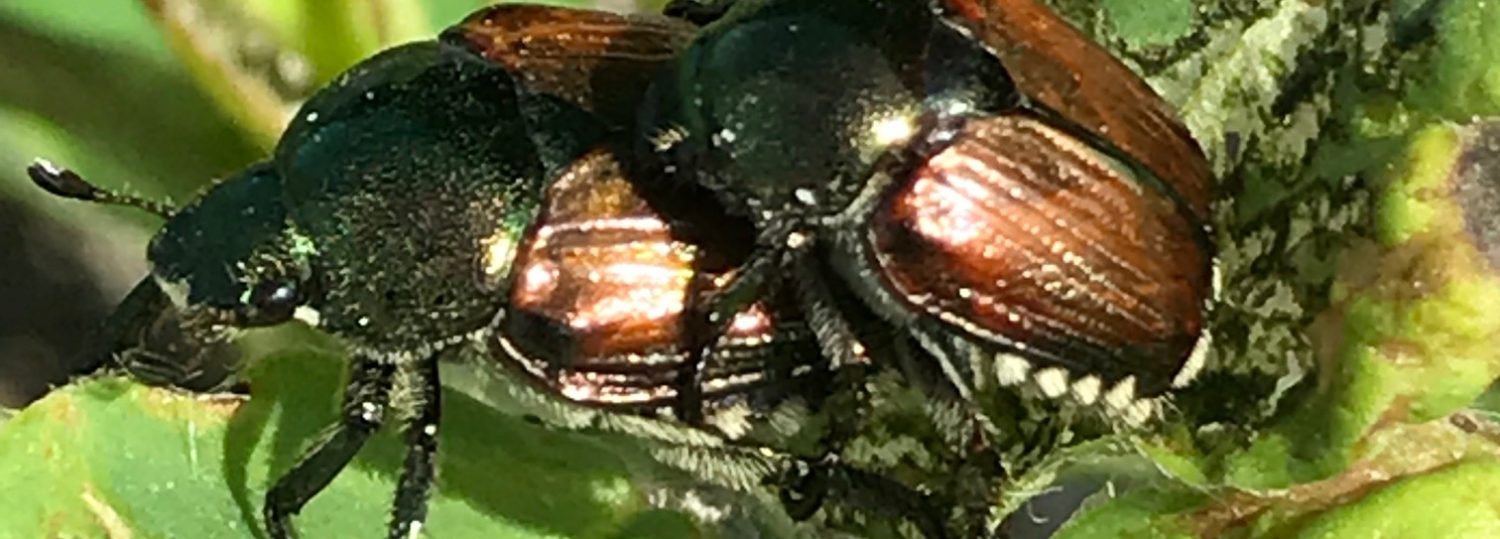In between rain showers the last two weeks, Japanese beetles have been spotted flying, mating and consuming plant tissue around North Carolina. Japanese beetles are known for being destructive landscape pests as they have a wide range of host plants (as many as 400!) and emerge in masses around the first or second week of June each year. Beetle feeding results in skeletonization, or removal of the soft tissue in between the veins of the plant leaf which leaves ornamental plants looking unsightly for most of the summer. Since adults feed aboveground, their management strategy is different from the larvae, or grubs, that cause root damage below the soil surface. Adults can be controlled by physically removing them from the plant in small areas or, if the infestation is severe, through the use of insecticide products available at hardware stores. Brand names of products change frequently so make sure to look for the active ingredients carbaryl or bifenthrin on the label before purchasing. Be sure that you select the appropriate product to apply in your landscape. Be aware that these products have a negative impact on pollinators and beneficial insects so only use them if necessary. Click here for more information for best management practices for pollinators in turf.

For preventive applications for Japanese beetle larvae (white grubs), now would be a good time for an application, prior to or at the very beginning of egg hatch. Curative treatments later in the year may not be as effective so if you have an area that historically has a white grub issue, a preventive application may be the way to go. Again, if you are making an application near flowering ornamentals, please refer to the Pollinator BMPs in Turfgrass document before spraying. For more info on Japanese beetles, including specific chemical recommendations for white grub applications, visit Turffiles.
